
© Railway Wonders of the World 2012-


Part 33


Part 33 of Railway Wonders of the World was published on Friday 13th September 1935.
This issue contained a colour plate On the New York, New Haven & Hartford Railroad. The colour plate was attached to page 1037, or the fifth page of this number. This plate had previously appeared as the cover to part 14.
The Cover
Our cover this week shows a LNER express emerging from Peascliffe Tunnel, near Grantham (Lincs). The train is hauled by the “Great Northern”, a three-cylinder “Pacific”, which is in the same class as the famous LNER locomotive “Flying Scotsman”.
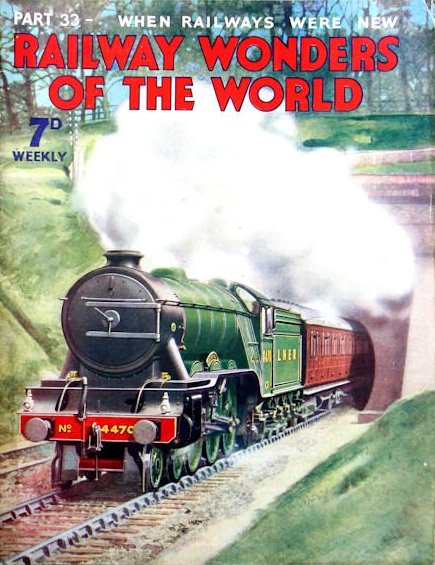
On the New York, New Haven & Hartford Railroad
ON THE NEW YORK, NEW HAVEN AND HARTFORD RAILROAD. This
4-6-2 engine has cylinders
25 in by 28 in and 6 ft 7 in driving wheels. Boiler pressure is 200 lb. per sq in, and the tractive effort is 37,650 lb. The total heating surface, including superheater, is 5,001 sq ft, and the grate area is
59.2 sq ft. The coal capacity is 13 tons and the water capacity is 7,500 gallons.
(Attached to page 1037)
This colour plate was previously used as the cover for part 14.
Speed Trains of North America
To-day America has the fastest regular run in the world made by steam power. This is the “Detroit Arrow”, recently accelerated to cover the 64.2 miles from Plymouth to Fort Wayne in fifty-one minutes, at a start-to-stop average of 75½ miles per hour. Another surprising and perhaps little-known fact is that in America runs aggregating over 15,000 miles in length are booked to be covered daily at speeds of sixty miles an hour from start to stop. It is competition that makes for railway progress and for new speed records. The time-honoured competition between the New York Central Lines and the Pennsylvania Railroad has been partly responsible for two of the finest American expresses - the “Twentieth Century Limited” and the “Broadway Limited”. These two luxury trains each covers the journey between New York and Chicago, a distance on nearly a thousand miles, at an overall speed, including stops, of about fifty-five miles an hour. The Union Pacific Diesel train in another wonder train of America. This runs twice weekly in either direction over the 2,272 miles between Chicago and Portland, in thirty-nine and a quarter hours, a remarkable performance considering that the Rocky Mountains are encountered on the way. This article is believed to be by Cecil J. Allen in series with others on the theme of “Speed Trains”.
(Pages 1037-1045 )
The “Twentieth Century Limited”
THE TWENTIETH CENTURY LIMITED” at speed, along the shores of the River Hudson, from which the standard “Hudson” (4-6-4) type locomotive at the head of the train takes its name. The time of this express has now been reduced to seventeen hours for the distance of 958.7 miles between New York and Chicago, and involves an average speed of 56.4 mph throughout, including all stops and speed restrictions. The weight of the train frequently exceeds 1,000 tons behind the tender.
(Page 1038)
This photograph also appears on the cover of part 9 and as the colour plate in part 14.
The Evolution of Compounds
The basic principle of a compound locomotive is that the engine utilizes its steam more than once, first in one or more high-pressure cylinders, and then in low-pressure cylinders. Compound locomotives originated in Great Britain, as far back as 1850. The former Eastern Counties Railway - later the Great Eastern - built the first compound. To-day, though British practice generally favours the multi-cylinder “simple” for express service, many Continental designers are partial to compounding. This chapter describes the evolution of the compound locomotive and discusses its advantages.
Webb’s “Greater Britain” three-cylinder compound is illustrated in part 29, whilst a Midland Compound appears on the cover of part 31.
(Pages 1046-1051 )
Contents of Part 33
Diesel Shunting Locomotives (Part 2)
When Railways Were New
On the New York, New Haven & Hartford Railroad (colour plate)
Speed Trains of North America
The Evolution of Compounds
Modern Construction in Italy
Main Lines of Brazil (Part 1)
A Hunslet Diesel Shunting Locomotive
CAPABLE OF HAULING 700 TONS, this Hunslet Diesel shunting locomotive weighs 30 tons and has a Davey Paxman 200 hp Diesel engine. The gearbox gives speeds of 4, 8, and 13 mph. This locomotive operates on the LMS Railway.
(Page 1031)
When Railways Were New
When railways began it was said that such maladies as consumption, bronchitis, or St Vitus’s dance might result from travel in a railway compartment. The railway was not authorized to enter Manchester until four Acts of Parliament had been passed, while the parliamentary campaign cost £850 a mile. To-day we are so familiar with the railway that we can read of this early opposition with some amusement. But our amusement should be tempered by the recollection that unreasoning opposition was a grave menace to progress. This chapter is a tribute to those men who had the courage and foresight to fight suspicion, indifference, and open hostility.
(Pages 1034-1036 )
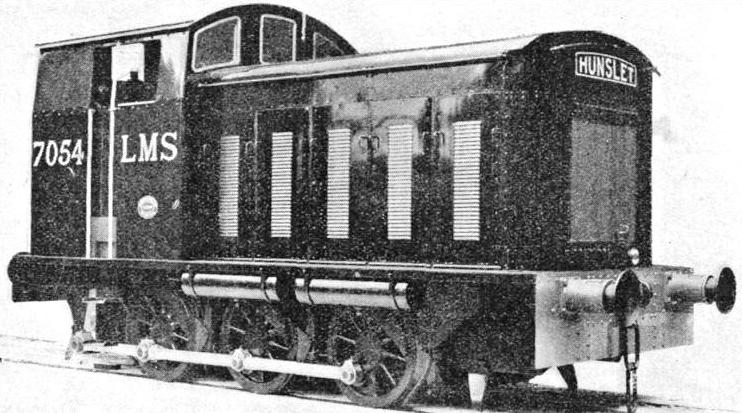
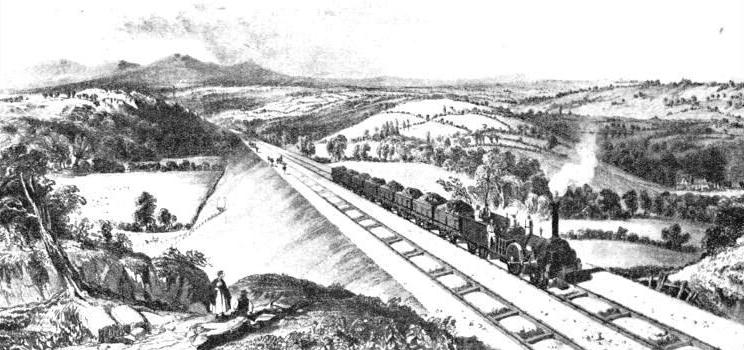
The Lickey Incline in Former Days
THE LICKEY INCLINE IN FORMER DAYS. The famous slope, with a gradient of 1 in 37.7, is now included in the Midland Division of the LMS Railway. It is situated near Bromsgrove, Worcestershire, on the route between Cheltenham and Birmingham.
A photograph of the Lickey Incline appears in part 19.
(Page 1034)
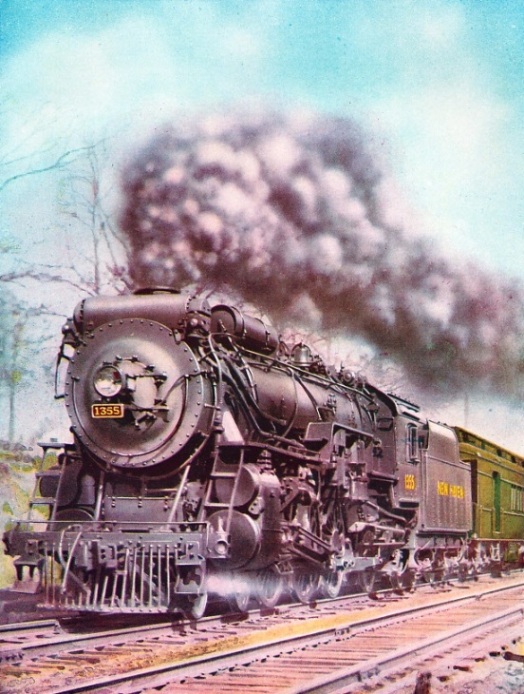
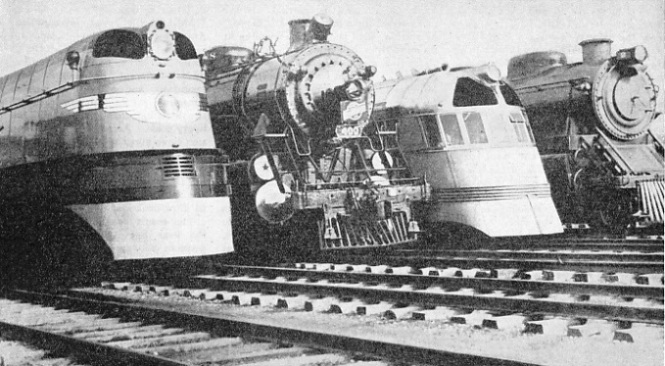
Some Speed Giants of America
SOME SPEED GIANTS of America are seen in this illustration, taken in the Chicago yards. From left to right they are the "Hiawatha", streamlined steam locomotive of the Chicago, Milwaukee, St Paul and Pacific Railroad, the "400" of the Chicago and North Western line, the Chicago, Burlington and Quincy Railroad's "Zephyr", and the Baltimore and Ohio Railroad's "Abraham Lincoln".
(Page 1037)
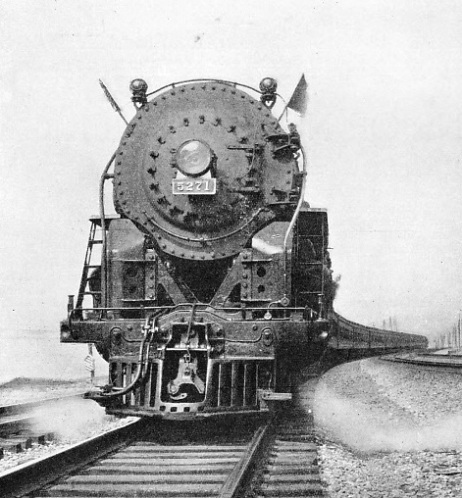
One of Webb’s “Teutonics”
ONE OF THE "TEUTONICS", the most successful class of three-
(Page 1048)
Modern Construction in Italy
Italy is one of the few European countries where important new lines have been laid within the last ten years. In recent years over 400 miles of line have been constructed in Italy. Part 10 described one of them, the Bologna-Florence Direttissima . This chapter gives a detailed account of an interesting railway from Fossano to Ceva, on the verge of the Italian Riviera; this line is notable for its fine viaducts. Although the line is quite short, having a length of less than twenty-four miles, its completion has meant a great improvement tin communications between the port of Savona and the industrial area of Piedmont, the capital of which it the royal city of Turin.
(Pages 1052-1054 )
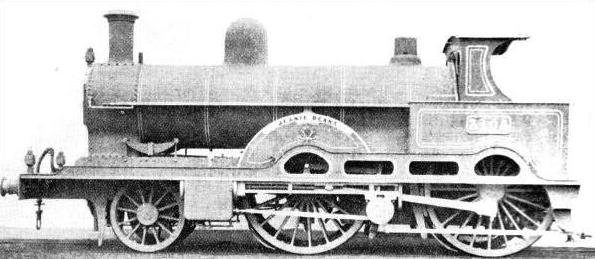
A Mobile Sub-Station
A MOBILE SUB-STATION used on the Italian State lines. This station can be conveyed to any particular point where the high tension supply is to be transformed to the voltage necessary for local purposes. Since its introduction in 1901, electrification in Italy has steadily increased; to-day about 1,300 route miles have been electrified, and further extensions are planned.
(Page 1053)
Main Lines of Brazil (Part 1)
Brazil is larger than Australia. Many of the lines are owned by the Federal Government, but a few are leased to or owned by British companies. Some of the lines are isolated; one of them was completed after having been derelict for over thirty years. This chapter is concluded in part 34.
(pages 1055-1060 )
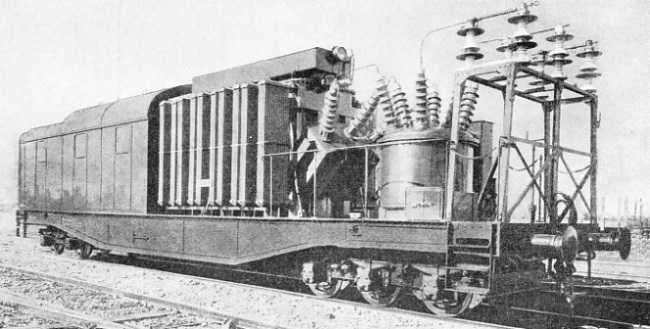
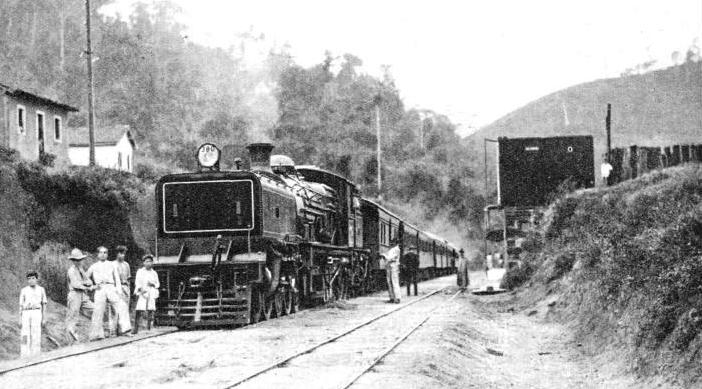
On the Leopoldina Railway
THE LARGEST BRITISH-